How to care for Ficus elastica 'Shivereana' - 3 tips plant experts say will keep this rare variety of rubber plant looking beautiful and healthy
Its colorful, robust foliage arguably makes the Ficus elastica 'Shivereana' one of the best types of rubber plants to grow at home
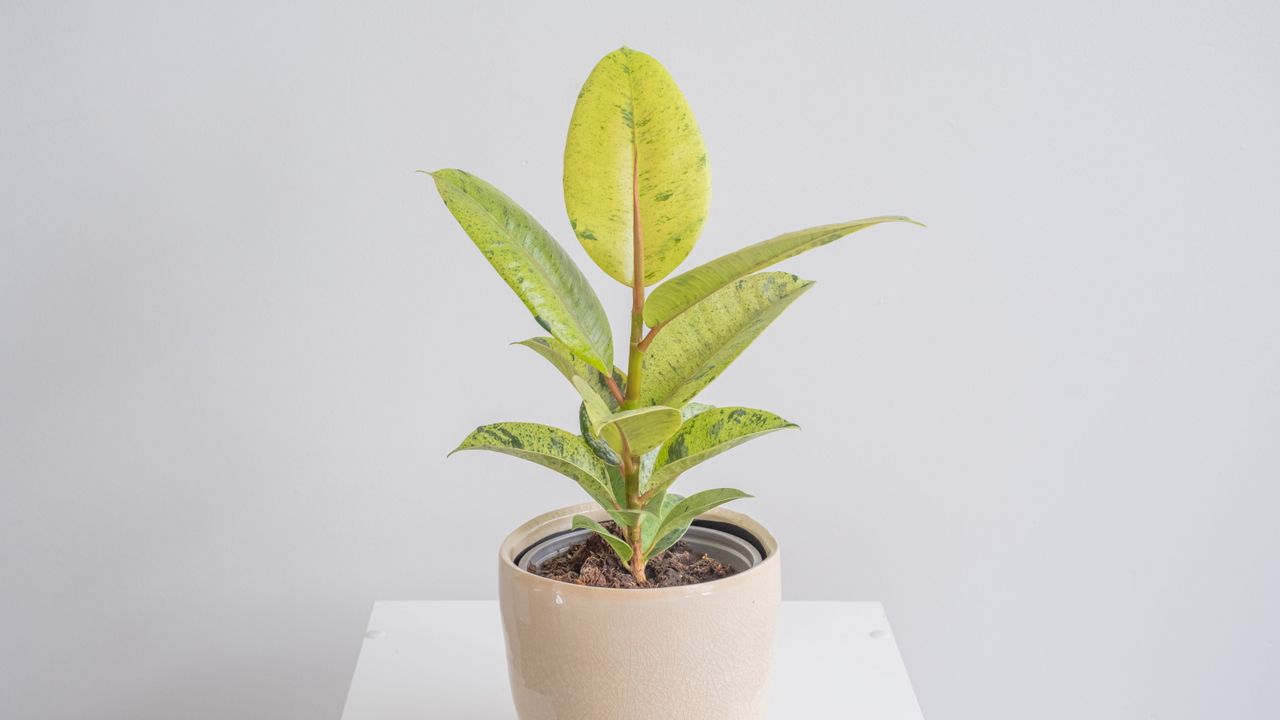

There's something about variegated foliage I can't get enough of as a self-confessed houseplant fanatic. That's why I was simply blown away when I came across the unique Ficus elastica 'Shivereana,' or ficus moonshine.
It's a lesser-known hybrid rubber plant featuring the classic oval foliage with a special splattering of yellow, cream, and green variegation. It's younger leaves appear a blush hue, making this plant even more charming.
The good news is if you already know about rubber plant care, you pretty much know how to care for Ficus elastica 'Shivereana.' Although, there are some slight differences to be aware of if you want to maintain this variegated indoor plant's best features. Here, plant experts share their top tips.
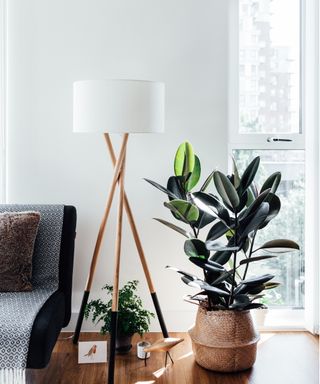
How to care for Ficus elastica 'Shivereana'
Rubber plants are generally low-maintenance indoor plants, meaning you don't need to do an awful lot to care for Ficus elastica 'Shivereana' properly. Simply follow these three expert tips and watch yours thrive.
1. Provide with bright, filtered light
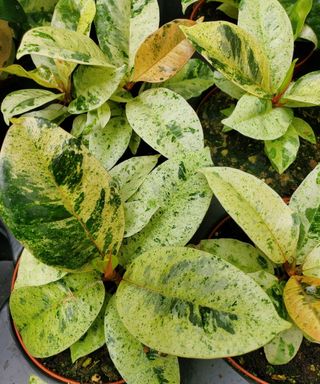
Native to tropical forests in Southeast Asia, rubber plants grow beneath canopies of trees, occasionally exposed to the bright light that filters through. It's important to imitate this lighting at home.
'Protect the plant from intense afternoon sunlight during warm, sunny weather, as prolonged exposure can cause leaf scorch,' says Nastya Vasylchyshyna, a resident botany expert at Plantum.
'In summer, Ficus elastica 'Shivereana' thrives in bright, filtered light and can tolerate direct sunlight in the early morning or evening, so the best spot for it will be a west or east-facing windowsill,' she advises.
As days get darker in fall and winter, it's best to follow houseplant winter care and move your rubber plant to the brightest spot possible. You may find grow lights for houseplants - like these grow lights from Amazon - are useful for boosting light levels during this time.
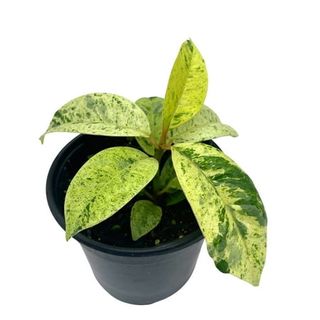
This beautiful 4-inch Ficus Moonshine Shivereana brings unique foliage to interiors.

Nastya is a professional botany expert for the Plantum app that helps identify plants and plant diseases and provides care recommendations. Her specialization is plant morphology, phytopathology, and plant physiology.
2. Maintain consistent moisture levels
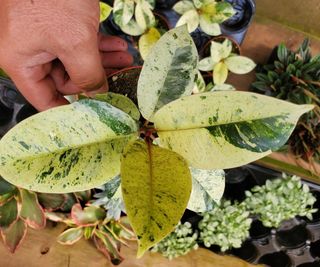
It can be tricky to know when to water indoor plants when you have so many in your collection, and it certainly took me some time to perfect my watering regime. The best thing you can do is understand the different watering requirements of each plant you grow. For Ficus elastica 'Shivereana,' this means not allowing the soil to dry out entirely.
'Ficus plants like to be kept moist, but it also needs a well-drained potting mix,' says Lisa Eldred Steinkopf. 'If ficus plants are kept too wet or dry, they will develop yellow leaves and you might even see your rubber plant dropping leaves,' she adds.
It's best to use a soil moisture meter (from Amazon) to identify when the top two inches of soil are dry. You can then give your rubber plant a top up of water.
'If the temperature drops, make sure to reduce watering,' Nastya notes. 'The rule of thumb is to adjust the watering frequency based on how fast the soil dries,' she adds.

Lisa is a houseplant expert who runs her blog The Houseplant Guru with over a decade of professional experience at Steinkopf Nursery and Garden Center in Michigan. As a child, Lisa helped her grandma tend to African violets and other houseplants. Since then, Lisa has forged a career providing houseplant advice, holding lectures and writing for publications across the US.
3. Fertilize your ficus during the warmer months
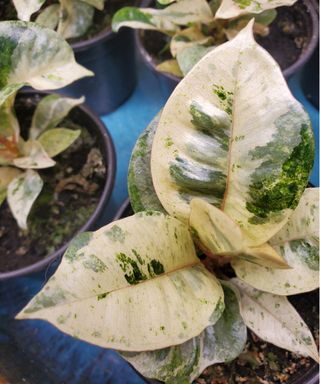
Although there are some houseplants you don't need to fertilize often, feeding plants is beneficial for boosting essential plant nutrients, often resulting in new growth emerging.
'Fertilize Ficus elastica 'Shivereana' from early spring to mid-fall to support its growth,' Nastya says.
The warmer months is when a rubber plant is actively growing, making it the ideal time to use an indoor plant fertilizer (from Amazon). 'In warm conditions with sufficient light, you can continue feeding it year-round, but reduce the dosage by half during fall and winter,' Nastya says.
Avoid fertilizing mistakes by following manufacturer instructions for the products you use and not oversaturating your plant's soil with fertilizer. This could cause issues of houseplant root rot or root burn.
FAQs
Why is my Ficus elastica 'Shivereana' loosing its color?
Ficus elastica 'Shivereana' is a rare variegated rubber plant that has yellow, cream and green variegation. You're likely to watch this beautiful color fade, as well as new growth lacking variegation, if your plant is not growing in sufficient light. To maintain any variegated foliage, plants need to have plenty of bright light. However, be aware rubber plants are sensitive to sunlight and may experience leaf scorch in a direct sun position. Something else you can do to keep your Ficus elastica 'Shivereana' looking bright is regularly clean houseplant leaves of dust and debris.
Is Ficus elastica 'Shivereana' cold-tolerant?
No, Ficus elastica 'Shivereana' is not a cold-tolerant houseplant. They thrive in temperatures between 60-75°F and do best in warmer parts of the home. Keeping this rubber plant somewhere it is exposed to cold temperatures and drafts may cause it to drop leaves as a result of root damage.
Although not essential for the list of how to care for Ficus elastica 'Shivereana', it can be beneficial to use one of the methods to increase humidity for indoor plants for this plant. Higher humidity levels (between 50% to 60%) reflect their native environment and will help keep foliage looking bright and healthy. 'If the air in the room is dry, consider using a humidifier,' Nastya suggests.
Sign up to the Homes & Gardens newsletter
Design expertise in your inbox – from inspiring decorating ideas and beautiful celebrity homes to practical gardening advice and shopping round-ups.

Tenielle is a Gardens News Writer at Homes & Gardens. She holds a qualification in MA Magazine Journalism and has over six years of journalistic experience. Before coming to Homes & Gardens, Tenielle was in the editorial department at the Royal Horticultural Society and worked on The Garden magazine. As our in-house houseplant expert, Tenielle writes on a range of solutions to houseplant problems, as well as other 'how to' guides, inspiring garden projects, and the latest gardening news. When she isn't writing, Tenielle can be found propagating her ever-growing collection of indoor plants, helping others overcome common houseplant pests and diseases, volunteering at a local gardening club, and attending gardening workshops, like a composting masterclass.
You must confirm your public display name before commenting
Please logout and then login again, you will then be prompted to enter your display name.
-
 This French-designed pepper mill has a prime spot on David and Victoria Beckham's countertops – it's a cooking essential for under $45
This French-designed pepper mill has a prime spot on David and Victoria Beckham's countertops – it's a cooking essential for under $45The Beckhams accessorize their kitchen counters with a beechwood mill that's designed to last through the decades – and it's surprisingly affordable
By Megan Slack Published
-
 9 bonus room ideas to make the most of your underused spaces
9 bonus room ideas to make the most of your underused spacesThe endless possibilities for a bonus room make them the ideal spot for your next home renovation, from home gyms to home theatres, here's what interior designers recommend you do with your space
By Ciéra Cree Published